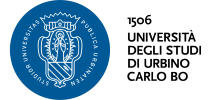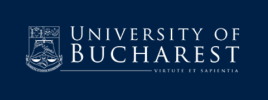Corruption: Where and Why (and How to Beat It)?
DOI:
https://doi.org/10.14276/2285-0430.2287Abstract
Corruptive environment is a phenomenon we are facing every single day through different point of views. It can have positive or negative impact from both macro and micro perspective. The study is focusing on two key questions: WHERE corruption is occurring (geographical, phenomenal levels etc.) and WHY is it occurring by identifying factors causing it (country specific factors). While the question “where” is relatively easy to answer, the question “why” requires a significantly more complex response. Country analysis was made according to their rankings through Corruption Perceptions Index, published annually by Transparency International. I have researched the main factors that affect the level of corruption in each group of countries, or rather tried to find similarities and differences between individual groups of countries with regard to what affects the level of corruption in these groups. A basic model of three factors (risk, benefit, and awareness) was created based on several known, scientifically confirmed factors that either generate or reduce corruption and affect the level of corruption in each country respectively. Depending on the level of corruption analyzed, countries can be placed into five classes by their common characteristics. During the discussion, the results of the study were then compared with the results of the already-known research, and the matches and differences defined. The findings were also commented upon with the aim to answer the question of how to fight corruption.
Key words: Corruption; causes of corruption; corruption: where?; corruption: why?; fight against corruption.
References
Allen, F., Qian, J. & Shen, L. (2015). Corruption and Competition. Available at: https://papers.ssrn.com/sol3/papers.cfm?abstract_id=2685219
Aljaž, I. (2009). Psihosocialne značilnosti mladoletniškega prestopništva. Diplomska naloga. Ljubljana: Univerza v Ljubljani, Fakulteta za socialno delo.
Ariely, D. (2012). The (honest) truth about dishonesty. New York:Harper Audio.
Azfar, O. (2005). “Corruption and Crime.” Global Corruption Report. Available at: http://www.transparency.org/whatwedo/publication/global_corruption_report_2005_corruption_in_construction_and_post_conflict
Beccaria, C. (2002). O zločinih in kaznih. Ljubljana: Pravna fakulteta in Cankarjeva založba.
Becker, G. S. (1974). Crime and punishment: An economic approach. In Essays in the Economics of Crime and Punishment (pp. 1-54). NBER.
Blažek, S. (2011). Korupcija in gospodarska rast. Zbornik 8. Festivala raziskovanja ekonomije in managmenta, Koper.
Buehn, A. & Schneider, F. (2012). Corruption and the shadow economy: like oil and vinegar, like water and fire?. International Tax and Public Finance, 19(1), 172-194.
Dimant, E. (2014). The Antecedents and Effects of Corruption-A Reassessment of Current (Empirical) Findings. Available at: https://mpra.ub.uni-muenchen.de/60947/
Dobovšek, B. (2005). Korupcija in politika. Ljubljana: Republika Slovenija, Ministrstvo za notranje zadeve.
Dollar D., Fisman, R. & Gatti R.(1999). Are Women Really the Fairer Sex? Corruption and Women in Government.. World Bank Working Paper Series No. 4 (1999).
Swamy, A., Knack, S., Lee, Y. & Azfar, O. (2001). Gender and corruption. Journal of development economics, 64(1), 25-55.
Dreher, A. & Gassebner, M. (2013). Greasing the wheels? The impact of regulations and corruption on firm entry. Public Choice, 155(3-4), 413-432.
Goel, R. K. & Nelson, M. A. (2005). Economic freedom versus political freedom: Cross‐country influences on corruption*. Australian Economic Papers, 44(2), 121-133.
Horvat, S. (2008). Kje je meja med korupcijo in lobiranjem. Diplomsko delo. Ljubljana: Univerza v Ljubljani, Ekonomska Fakulteta.
Hough, D. (2017). There’s more to measuring corruption than Transparency International’s annual index, just released. Available at: https://www.washingtonpost.com/news/monkey-cage/wp/2017/01/26/theres-more-to-measuring-corruption-than-transparency-internationals-annual-index-just-released/?utm_term=.350186f99f7f
Huntington, S. P. (2005). Spopad civilizacij. Ljubljana: Mladinska knjiga
Johnston, M. (2005). Syndromes of corruption: wealth, power, and democracy. Cambridge University Press.
Karklins, R. (2002). Typology of post-communist corruption. Problems of Post Communism, 49(4), 22-32.
Kasdin,M., Seidel, J.G. & Nichols M.P. (2004). Corruption as a Pan-Cultural Phenomenon: An Empirical Study in Countries at Opposite Ends of the Former Soviet Empire. Texas Internation Law Journal,
Kaufmann, D. & Gray, C. W. (1998). Corruption and Development. Washington: Finance&Development.
Komisija za preprečevanje korupcije. (2005 - 2014). Letna poročila. Pridobljeno na: https://www.kpk-rs.si/sl/komisija/letna-porocila
Lee, W. S. & Guven, C. (2013). Engaging in corruption: The influence of cultural values and contagion effects at the microlevel. Journal of Economic Psychology, 39, 287-300. Available at: http://www.sciencedirect.com/science/article/pii/S01674870130011
Marks, S. R. (1974). Durkheim's theory of anomie. American Journal of Sociology, 80(2), 329-363.
Meško,G., Eman,K. & Flander B. (2016). Oblast, legitimnost in družbeno nadzorstvo. Ljubljana: Fakulteta za varnostne vede, Univerza v Mariboru.
Mungiu-Pippidi, A. (2013). Controlling corruption through collective action. Journal of Democracy, 24(1), 101-115.
North, C. M., Orman, W. H. & Gwin, C. R. (2013). Religion, corruption, and the rule of law. Journal of Money, Credit and Banking, 45(5), 757-779.
O'Brien, J. & Palmer, M. (1999). Atlas verstev sodobnega sveta (kartografsko gradivo). Ljubljana: Družina.
Puka, E., & Beshiri, D. (2013). Political and Economic Aspects in Education: an Analysis of Citizen Formation Process through Active Citizenship. The International Journal of Economic Behavior-IJEB, 3(1), 147-153.
Rus, V. (2001). Podjetizacija in socializacija države. Ljubljana: Fakulteta za družbene vede.
Smarzynska,B. & Wei, Shang-Jin. 2000. Corruption and Composition of foreign direct investment: Firm - Level Evidence. Cambridge: National Bureau of Economic research.
Svensson, J. (2005). Eight questions about corruption. The Journal of Economic Perspectives, 19(3), 19-42.
Sumah, S., & Mahic, E. (2017). Determinants that influence the rate of corruption. Revija za kriminalistiko in kriminologijo, 68(3), 248-257.
Tanzi, V. & Davoodi, H. (1997). “Corruption, Public Investment, and Growth.” IMF Working Paper 97/139, Washington: International Monetary Fund.
Tanzi, V. & Davoodi, H. R. (2000). Corruption, Growth, and Public Finances. IMF Working Paper, Vol. , pp. 1-27, 2000.
Tarasov, A. (2015). Is Equality Fair?. The International Journal of Economic Behavior-IJEB, 5(1), 133-148.
Transparency International (2017). Corruption perceptions index. Available at: http://www.transparency.org/research/cpi/overview
UN Office on Drugs and Crime (2013). Poslovanje, korupcijai kriminal u BiH: Utjecaj mita i kriminala na privatna preduzeča. Dunaj.
Uslaner, E. M. (2005). The bulging pocket and the rule of law: Corruption, inequality, and trust. In Conference on The Quality of Government: What It Is, How to Get It, Why It Matters (pp. 17-19).
Downloads
Published
Issue
Section
License
L'opera è pubblicata sotto Licenza Creative Commons -CC Attribution-ShareAlike 4.0



